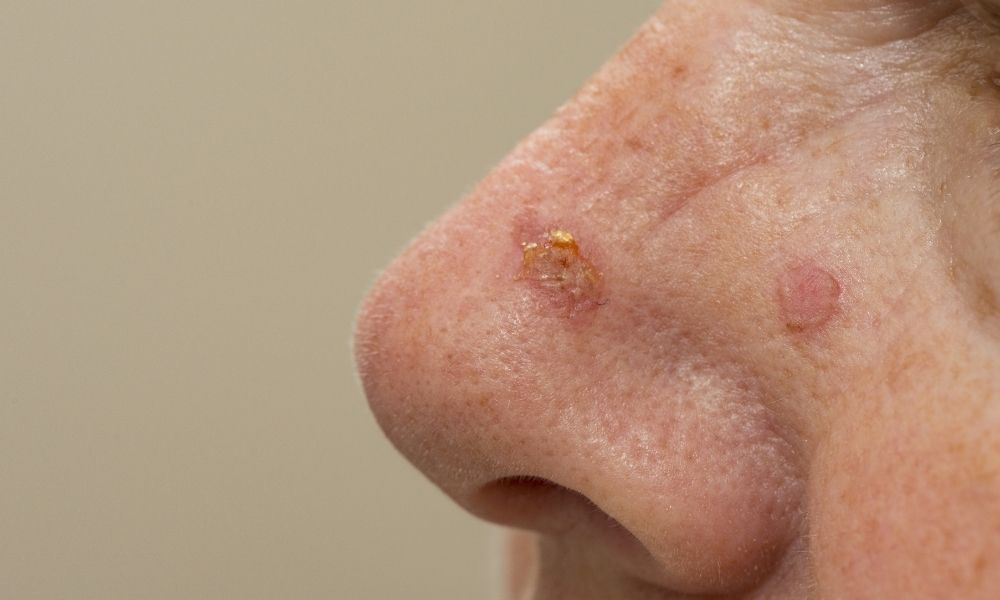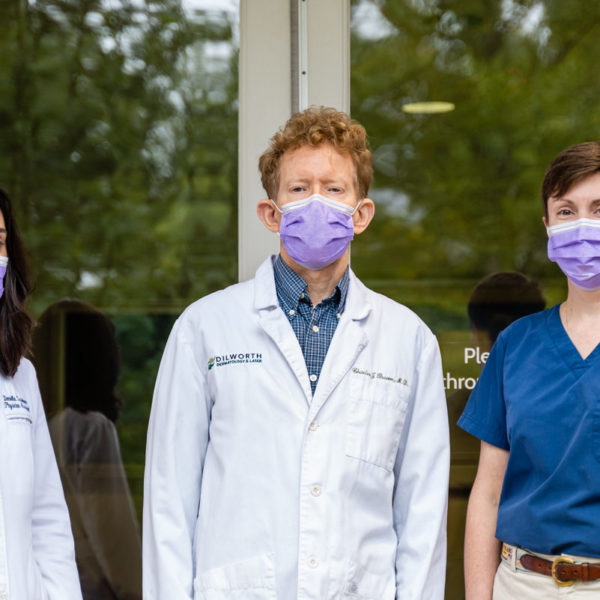
Actinic keratosis (AK), otherwise known as pre-cancers or solar keratosis, are lesions that form on sun-damaged skin. They develop from chronic UV exposure received from tanning beds or outdoor tanning. Individuals who are outside frequently, like workers or sports enthusiasts, are at higher risk for actinic keratosis.
How Do UV Rays Lead to Actinic Keratosis?
The sun gives out UV rays naturally (ultraviolet radiation). The UV rays in tanning beds are artificial. You can’t feel UV rays, and this is why you still have the potential to get a sunburn even on cool days. Regardless of whether they are natural or artificial, too much is not suitable for your skin.
UV radiation from the sun or tanning beds causes damage and mutation to the genetic material (DNA) in your cells. The human body is pretty good at repairing damaged cells. However, research shows that certain parts of our genetic makeup don’t repair quite as well from mutations caused by UV light, increasing the risk for skin cancer.
How Do I Identify Actinic Keratosis?
Actinic keratosis manifests in many different ways: crusty, flaky, red, pigmented, recurrent, dry, non-healing. AK’s are frequently found on the face, lips, forearms, scalp, neck, or the back of the hands. They grow very slowly and usually begin to appear in people over the age of 40.
According to the Mayo Clinic, actinic keratosis can vary in appearance. Signs and symptoms include:
- Rough, dry, or scaly patch of skin, usually less than 1-inch (2.5 centimeters) in diameter
- Flat to slightly raised patch or bump on the top layer of the skin
- In some cases, a hard, wart-like surface
- Color variations, including pink, red, or brown
- Itching, burning, bleeding or crusting
- New patches or bumps on sun-exposed areas of the head, neck, hands, and forearms
Are Actinic Keratosis Spots Cancerous?
While AKs are considered benign, they all can become squamous cell skin cancers (SCC). SCCs are the second most common type of skin cancer.
Treating AKs before they become SCCs has much less chance for scarring. Also, if SCCs are left untreated, there is a minimal chance that they can metastasize and be life-threatening. There is no way to tell which AKs have the potential to become SCCs.
Who is at Risk for Actinic Keratosis?
Anyone and everyone is at risk for actinic keratosis. However, some have an increased risk for developing AK. People with lighter skin, lighter eye color, freckles, and more sun damage generally have more actinic keratoses.
How is Actinic Keratosis Treated?
AK’s can be cleared up or removed. The easiest, most common, and effective way to treat AKs is with topical liquid nitrogen or cryotherapy. Other treatments involve topical creams or topical chemicals with an added light source (Blu-light). Your doctor will recommend the best treatment for you based on the number of AKs you have.
If you have questionable spots on your skin that need to be looked at, please contact our office, and one of our board-certified specialists will be able to recommend the best treatment for your skin.





